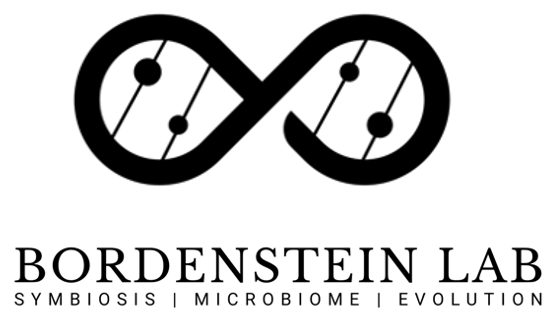How do microbes interact with animals?
Select Media
- Vanderbilt News: Darwin’s Magnificent Mystery and the Microbiome (November, 2021)
- The Scientist: Animal Microbiomes Are Unique and Beneficial (November, 2016)
- Futurity: Add Lots of Microbes to “Me, Myself, and I” (August, 2015)
- Discover Magazine: Gut Feeling for New Species (September, 2014)
- Quanta Magazine: Evolving With A Little Help From Our Friends (June, 2014)
- Science News: Made of Microbes: New view of microbes forces rethinking of what it means to be an organism (December, 2013)
- Public Radio International’s Living on Earth Radio: “Microbes and Evolution” interview (July 2013)
Research Summary
In nature, there are no animals without a microbiome, and most microbes are beneficial or harmless to their hosts. As such, animal, plant, and other hosts are termed holobionts to reflect they are an assemblage of host and microbial cells. This newly appreciated complexity in host-microbe associations is an inflection point for the life sciences that few could have predicted just a couple of decades ago. Looking further back, Darwin and the 20th-century pioneers of biology would have been astonished to see the countless roles that symbiosis and the microbiome play in animal evolution. A major line of research in our laboratory harkens back to Darwin’s Origin of Species, but in the present-day light of symbiosis. We ask:
- How do closely related animal species vary in their microbial communities?
- Does host genetic variation affect these microbiome differences?
- And what is the role of bacterial symbiosis and microbiomes in animal speciation?
To put this work in context, the origin of species is most often studied with genetic approaches that quantify the number and types of nuclear genes involved in reproductive isolation. Yet in 1927 after discovering that mitochondria were bacterial derived, Dr. Ivan Wallin suggested that bacterial symbionts were fundamental to host evolution. In the 1970’s, Dr. Lee Ehrman showed for the first time that hybrid sterility between fly species could be cured with antibiotics. In the 1990’s, Dr. Lynn Margulis advocated that microbial symbiosis is central to speciation, though she never conducted experiments on this topic. The field then lay dormant with few exceptions. We are now pursuing a comprehensive set of studies on how symbiosis and the microbiome help drive the origin of new animal species.
Select Publications
- Miller, A.K., C.S. Westlake, K.L. Cross, B.A. Leigh, and S.R. Bordenstein (2021) The microbiome impacts host hybridization and speciation. PLOS Biology 19(10): e3001417
- Van Opstal, E. and S.R. Bordenstein (2019) Phylosymbiosis impacts adaptive traits in Nasonia wasps. mBio 10 (4) e00887-19
- Brooks AW, Kohl KD, Brucker RM, Van Opstal EJ, and Bordenstein SR (2016) Phylosymbiosis: Relationships and functional effects of microbial communities across host evolutionary history. PLOS Biology
PLOS Biology Open Highlight – Evolving as a Holobiont
- Shropshire, J.D. and Bordenstein SR (2016) Speciation by symbiosis: The microbiome and behavior. mBio
- Brucker, RM and Bordenstein SR. (2013) The hologenomic basis of speciation: Gut bacteria cause hybrid lethality in the Genus: Nasonia. Science
- Brucker, RM and Bordenstein SR. (2012) The roles of host evolutionary relationships (Genus: Nasonia) and development in structuring microbial communities. Evolution
- Brucker, RM and Bordenstein SR. (2012) Speciation by Symbiosis. Trends in Ecology and Evolution
